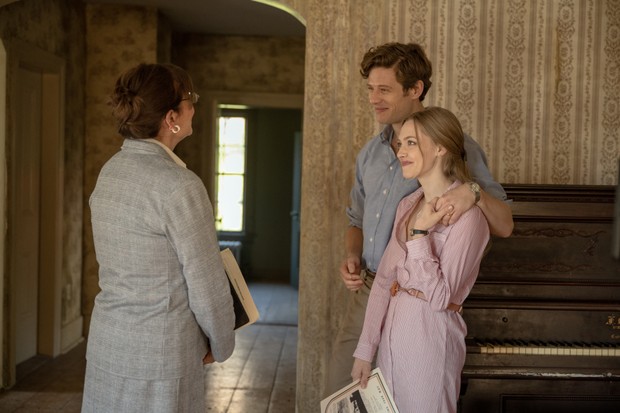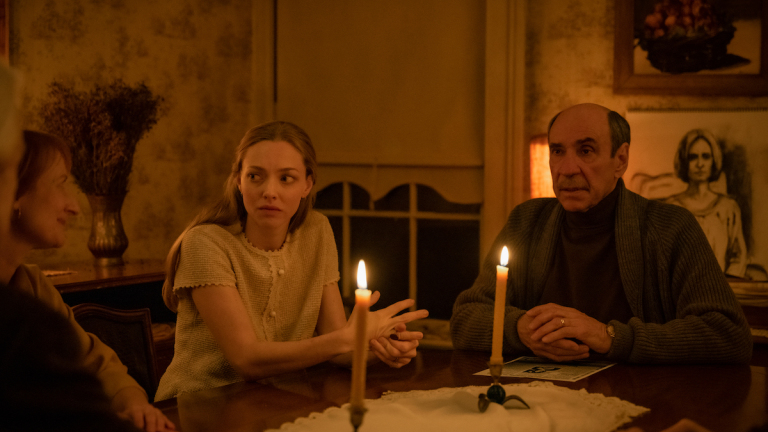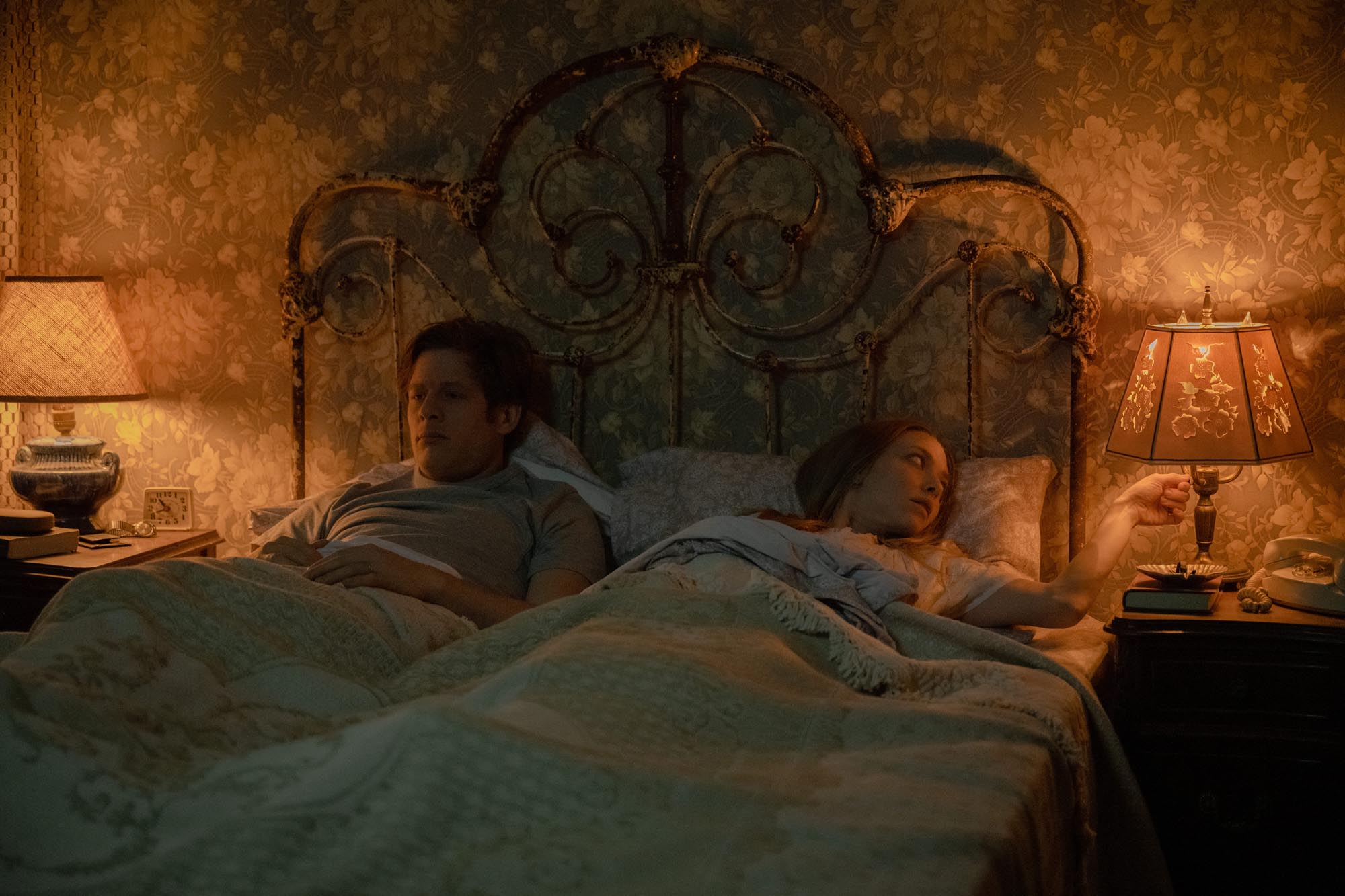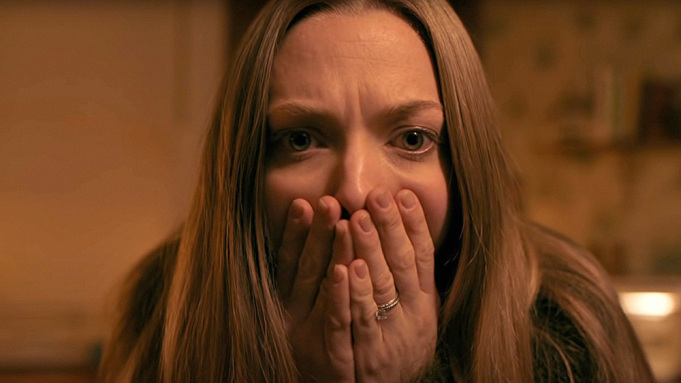It doesn’t seem like a coincidence that the new Netflix horror Things Heard & Seen is set in 1980, the same year Stanley Kubrick released The Shining. There’s Shining all over this thing. A family of three, with the daughter about the same age as Danny Torrance, moves into a new home that is haunted by the spirits of its past occupants, causing the dad to go off his rocker. An axe even figures into the dissolution of the character in both films, and the films end on a surprising similar shot. Of course, Things Heard & Seen cannot approximate the quality of Kubrick’s masterpiece, but then, few films can. It does land in the same neighbourhood as The Shining’s 2019 sequel, Doctor Sleep, which is a good enough outcome in terms of modern prestige horror.

The prestige of Shari Springer Berman and Robert Pulcini’s film is probably the best thing it has going for it, as this film looks gorgeous, from establishing shots of a leafy upstate New York to the original evocation of the restless spirits. It’s the first foray into horror for the husband and wife team, who have been making movies together since they first caught our attention with the Paul Giamatti vehicle American Splendour in 2003. This is definitely a new direction for the pair, and the results suggest another such outing would be welcome enough.
George (James Norton) and Catherine (Amanda Seyfried) are a married couple relocating from New York City after George lands a job teaching art history at a small rural university. He’s been forced to flee a professional controversy, though we don’t learn a lot about that at the start. In tow is their daughter Franny (Ana Sophia Heger). As children usually are, Franny is the first to pick up on something supernatural in the house, as her nightlight flickers with a ghostly embodiment and her rocking chair rocks without an occupant.
Catherine starts picking up on it too and begins researching the history of the home, though its biggest secrets are only in the minds of her neighbours, who are keeping their mouths shut. (These include a real estate agent played by Karen Allen of Raiders of the Lost Ark fame, who is still going strong 40 years later.) She also finds an ancient family tree in which various lineages end in the word “Damned,” written ominously in the calligraphy of the time. The most recent owners vacated, as it were, after the husband shot all the cows and strangled his wife. Catherine doesn’t learn this, though, until pretty late in the game, after that family’s sons have begun visiting her house to do day labour.
The effects are more profound on George, who wasn’t a great guy to begin with, but rather too quickly begins flirting with a local (Natalia Dyer) he spots carrying a book devoted to Caravaggio’s artwork. He teaches Caravaggio, and any little in is enough to encourage him to the pull the thread on an already unraveling marriage. Whether it’s his own natural pathologies, or those in the house infecting him, remains open to interpretation.

These are not unfamiliar ingredients for the setup of a horror movie, and in truth, Things Heard & Seen barely has that grain of individuality that makes one project worth adapting over another. An adaptation it is, of Elizabeth Brundage’s novel All Things Cease to Appear. (That would have been a cool enough title, but oh well.) The perceived audience appetite for horror is on display in spades here, as you could really draw up a basic premise like this in a Horror 101 screenwriting class.
That’s not to say the film is without distinction, as it finds its edge in the filmmaking and the cast. Seyfried’s wide Disney eyes were made for horror, though it was only just last year that she made her first film you would characterise that way (You Should Have Left). Her acting has always carried a quality about it that makes her easy to identify with, and that’s especially useful in a scenario where she’s our surrogate in learning about all the creaking boards of a 200-year-old Hudson Valley home. Her husband’s disregard for her drives us further into her camp.

Norton is the next smart choice in that regard. He’s almost impossibly handsome in his preppy 1980 sports jackets and jumpers, but he’s also a bit of a weasel with a very punchable face. Once you sense he’s going down a similar path to Jack Torrance, it’s a delight to watch the things that make us loathe him become the things that make us fear him. Rounding out the cast are good supporting turns by Rhea Seehorn and F. Murray Abraham.
The script is what really hobbles the film. It can be useful to introduce red herrings in a story like this, but there’s a difference between red herrings and story points that just don’t go anywhere, and Berman and Pulcini’s script doesn’t understand that difference. Especially in the second and early third act, they’re building a momentum toward one particular type of conclusion before ending up with a totally different one that lands with a kind of odd disjuncture. While that could work as a surprise, it doesn’t feel intentional, but rather, a structural breakdown.

Fortunately for the directors, horror is one of those genres where atmosphere is more important than narrative, and they do stick the landing on that. Their depiction of the film’s more ethereal and sepulchral story elements are bound to prompt chills at a number of points throughout. Just don’t look for a satisfying resolution to the questions asked early in the narrative, because they aren’t really there.